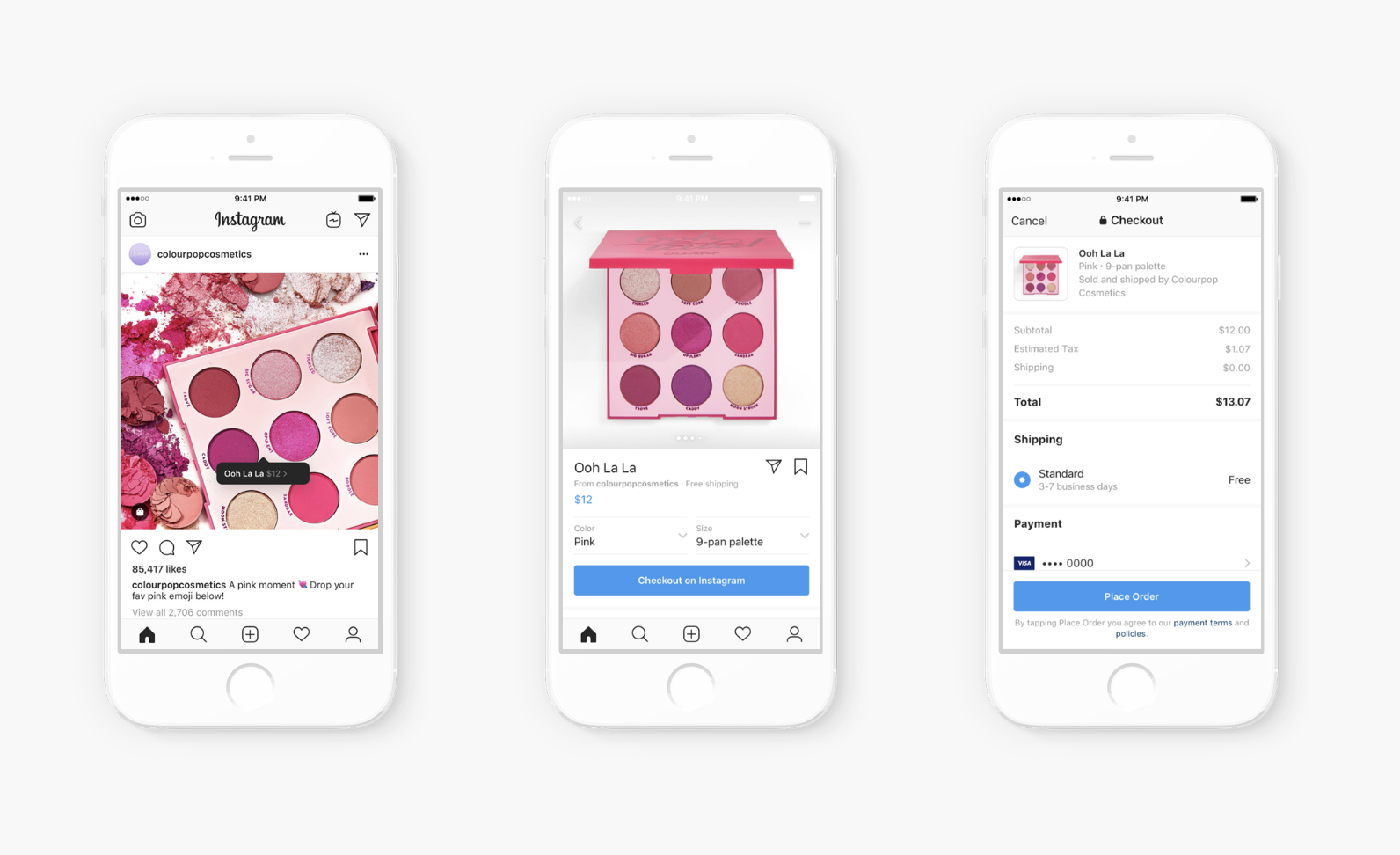Today, we are going to talk about social commerce.
Specifically, we will look at:
- What social commerce is (and why it is important)
- The history of social commerce
- Why social commerce is on the rise in 2020 (and beyond)
Ready?
Let’s get started:
What Is Social Commerce (And Why Is It Important)?
Social commerce is the use of social networks for e-commerce transactions.
Put simply:
Social commerce is the buying and selling of products through social media platforms.
Facebook is currently leading by example in the social commerce field. Within their ecosystem, they currently offer:
- Checkout on Instagram
- Catalog on WhatsApp
- Marketplace on Facebook (see screenshot above)

Each of these offers a different approach to social commerce, which is tailored to fit the different demographics, needs, and benefits of each platform.
TikTok also threw its hat into the ring in 2019 by testing a social commerce feature for its audiences in China and India. As such:
It is easy to see that social commerce is a growing part of the modern business world.
There are several contributing factors to this.
Namely:
- People are spending more time on social media.
- Platforms are providing greater targeting tools.
- Mobile shopping has seen a steady rise
But the major benefit to both customers and merchants is social commerce’s ability to streamline the sales process. It can drastically reduce friction.
Using social commerce platforms, brands can:
- Connect with users directly
- Sell products to customer without them having to leave the platform
- Build on the trust provided by an established platform
- Retarget customers who have already expressed interest in products
We will look at these more in-depth as this article progresses.
But, in a nutshell:
Social commerce offers a great opportunity for brands to reach and enter into transactions with new people on well-established platforms.
Although this may be the first time you are really considering social commerce, and looking at how to use it for your brand, you may be surprised to hear it already has a 15+ year history.
A History Of Social Commerce: A Long-Established Idea That Has Struggled To Gain Traction
Social commerce has been around since 2005.
The term was first used to show how user-generated content could influence the buying process.
The first mainstream instance of social commerce came in 2007 when Facebook launched its Marketplace feature, where users could sell to each other on a peer-to-peer style platform.

Users could:
- Post products.
- Manage payments.
- Leave comments.
- Bid on items.
- Contact sellers directly.
However, the platform (proportionately) gained little traction. Why?
Well, there are several reasons that impacted each other.
In the early days of social media, people came for content and connections. They wanted to meet, chat, share, and interact with each other.
(Let’s not forget it was 2008 before Facebook finally overtook Myspace as the world’s most used social media platform!)
Social media was for people; Amazon was for online shopping.
There was also the question of technology.
The functionality to make and accept payments on social media was not as advanced as it is now. As such, there was no option to run a business entirely from these platforms.
To do that, you would need a third-party website with its own backend systems.
This made for a great marriage between Shopify-based websites and social media platforms, as they offered integrations and tools to make growing a presence much easier.

In 2016, Facebook decided to relaunch and revamp its Marketplace feature. Specifically, they allowed users to:
- Search for products, brands, and locations
- Use a “buy now” button to purchase products directly
They also set to work creating the social commerce features in the Facebook-ecosystem we mentioned at the top of the article. Why?
Because, at least in part, users have become more accustomed to buying products through social media channels. People do not just log in for updates from friends but also — and increasingly — from brands.
Social commerce now improves the social media user experience by offering a way to purchase from and support our favorite brands on the platforms we love.
This has led to a change in how we perceive social commerce, and, as such, we are seeing an upward trend. And, it may just be the newest opportunity for brand growth.
The Social Commerce Forecast: How It Will Look In 2020 (And Beyond)
One of our marketing predictions for 2020 is a rise in social commerce.
Facebook has ramped up investment into the field. Not only in its own services but for third party ones.
In 2019 they invested in an Indian platform called Meesho for a reported $20-to-$25 million.

Because of this investment, we are likely to see a stark rise in users shopping on social commerce platforms.
The driving force for this will be removing friction.
Thanks to social commerce, users can:
- Make purchases within the platform
- Purchase products in real-time
For example, if users are watching a Facebook live stream, they will be able to purchase products that are mentioned in the video.
The platforms will also offer:
- Trust: social media platforms have developed well-trusted brand names
- Security: platforms can now offer payment encryption
- Enjoyment: shopping will become a part of the social media experience
While these benefits are mainly user-focused, they also have a positive impact on brands looking to use the platform to grow.
There are opportunities to:
- Target users directly
- Include products in content marketing efforts
- Create streamlined sales funnels
- Target and retarget users
If nothing else, this presents a great opportunity to increase ROI on social media platforms and better calculate important metrics like goodwill.
Now:
There is still a learning curve for users when it comes to social commerce. We do not predict that Facebook will replace Amazon by the end of 2020.
Many people are happy to learn about products via social and buy through traditional distribution channels (either online or offline). There is still a level of intent on e-commerce platforms that social commerce does not yet have.
However, this can change with exposure.
As more trustworthy brands begin using social platforms to sell products, we could see social commerce become a credible alternative channel to Amazon, Shopify & eBay.
All of which begs the question:
Will you be part of the social commerce movement?

Manage all your social media accounts in one place.
Craft, schedule, & auto-post content to all your social channels, then track analytics and manage interactions from a single, easy-to-use dashboard.
Social Commerce In A Nutshell
Social commerce is the process of buying and selling through social media platforms.
It has a long history, but it is probably in 2020 and beyond, that we will begin to see big things.
Why?
Because:
- Platforms are increasing their investment in social commerce
- Mentalities around social media are evolving (users want to connect with brands)
- Technology has become more capable of supporting social commerce



